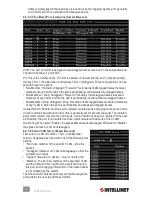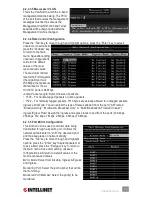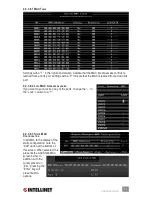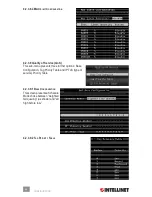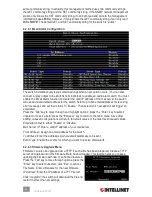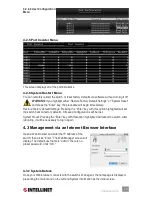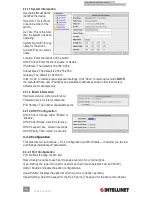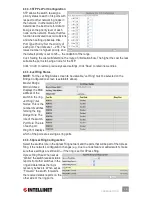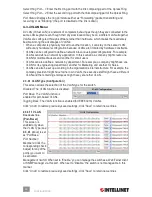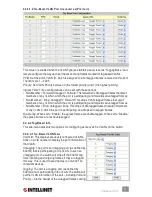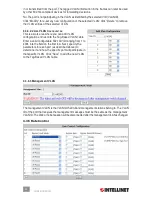
4.2.3.3.1 P
oRT
-b
asED
Vlan C
onfiguRaTions
Port ID Members:
Set the VlAN association of one port to another. Blank spaces indicate there
is no set VlAN association. default
is that all ports are associated, though
you can also set all ports as isolated.
Ports 1 – 8 Management:
When
designated as “enable,” the switch can
be managed as a Web/Telnet client or
as an SNMP manager via this port.
“disable” disallows such management.
Press the “Tab” key to move through
and highlight options; press the
“enter” key to select/unselect or to
exit a field; press the “Esc(ape)” key
to return to the main menu. Save after
editing; unsaved configurations will return to default values or the most recent saved values.
4.2.3.3.2 T
ag
-b
asED
Vlan C
onfiguRaTions
Tag-based VLAN is the standard implementation of IEEE802.1Q VLAN. With the switch set
as a tag-based VLAN switch, every port has the following:
• PVId (Port VlAN Id) number, which generally refers to the VlAN to which the connected
non-802.1Q-aware device (like a device server or computer) belongs. This can be configured
in the Port Information menu in section
4.2.3.3.3
below.
• Priority: This refers to the priority of the port and the non-802.1Q packets received on the
port,
generally from a non-802.1Q-aware device. Like PVID, this can be configured in the Port
Information menu in section
4.2.3.3.3
below.
• Participating VLANs: These are the VID-tagged packets that are allowed to flow in or out of
the port. A port may participate in multiple VlANs, like an uplink port connected to another
switch that will transfer the packets from various devices belonging to different VlANs into
the network.
NOTE:
Generally, a port connected to a peripheral non-802.1Q device can only
participate in one VlAN, the same VlAN Id that is selected for that port in the Port Information
menu. The participating VLANs can be configured in the Add VLAN Group menu below.
• If the port is set in the Add VLAN Group menu as a tagged port, all packets flowing out of
the port will be tagged frames to an 802.1Q switch or device.
• If the port is set as an untagged port, all packets out of the port will be untagged frames
(stripped of their tags at the port) to a non-802.1Q device.
• When a packet is received (ingress) on the port, it is filtered to be dropped or forwarded
according to the user-specified rule (configured in the Port Information menu) for ingress
filtering untagged frames and tagged frames that are not members of the receiving port’s
participating VLANs (configured in the Add VLAN Group menu in section
4.2.3.3.5
below).
• If the packet is forwarded, the untagged frames, generally from a non-802.1Q-aware
device
or peripheral, are tagged with the PVId and priority that were assigned to the ingress port.
The untagged packets received by an 802.1Q switch in this way become tagged frames.
• The tagged frames received on the ingress port are kept unchanged if the port’s not dropped.
• The switch then moves the frame into the egress port that’s a participant of that specific VLAN.
For example: If the ingress is from a peripheral device linked to a downlink port on a switch
with only one uplink port and the frame is addressed to a device on another switch, the frame
would be switched to egress out of the uplink port. This uplink port would be set to participate
in the VLANs of all the downlink ports and forward all their traffic.
• If the egress port is an untagged port (normally a port linked to a peripheral, non-802.1Q
device that does not accept tagged frames), the VID and priority fields will be stripped off
(untagged) from the frame and then transmitted out of the egress port. A previously tagged
17
CONFIGURATION
Summary of Contents for 523769
Page 1: ...fast Ethernet Managed Switch user manual Model 523769 INT 523769 UM 0607 01 ...
Page 2: ......
Page 47: ......
















